**This is the 2nd post in a series on our rainwater system. Read Part 1***
Do you know how many gallons of rainwater you could catch off your roof in a year? Any idea how many glasses of water that would fill? One square foot of roof catches
.623 gallons every time it rains one inch. So, to estimate how many gallons you could collect, multiply .623 by the square footage of your building (allowing for roof overhang) and multiply that by the average number of inches of rain you get annually where you live.
(Building Area) X (.623) X (Inches of Annual Rainfall)
Our area is 1600 square feet when allowing for roof overhangs. McMinnville’s average annual rainfall is 46 inches, so, if .623 gallons run off every square foot of roof every time it rains one inch, my calculation is:
(1600 sq. feet) X (.623 gallons/sq. ft) X (46 in. annual rainfall) = 45, 862 gals
Can you believe it—-over 45,000 gallons? And we’re on track to get 10 inches more than average this water year (October-September)—-10,000 more gallons of rainwater from our roof. That’s 55,000 gallons in 2016-2017!!! There are dozens of online sites with calculating instruments, if you want to play around. For instance, go to www.watercache.com, click on “rainwater harvesting,” scroll down to “How much rain water could I collect?” and punch in your numbers. It will even help you calculate your square footage from a satellite view of the roof or your house.
So how do we go about using this water in a safe and efficient manner? Well, let me describe how water gets from raindrop to water glass. Here’s the route in brief:
- Metal Roof—-catches rain
- Micro Mesh Gutter Cover—-is the first filter
- First Flush—-downspout system flushes off roof debris
- PVC Piping—-goes underground to storage tanks
- Three 3,000 Gallon Rain Tanks—-are filled by gravity
- Pump in Garage—-pressurizes the system
- Purification System: takes water through string and charcoal filters, UV light
- All Home and Yard Uses: drink, cook, wash, flush, grow tomatoes
- Overflow: goes to Native Plant BioSwale and on to storm drain
- Connection to City Water: provides backup—prevents contamination
And a little more detail on each:
1 – Metal Roof: we start off with a painted metal roof, allowing relatively clean rainwater run-off compared to, say, composition roofing. A steeper pitch provides higher velocity run-off which cleans the roof surface more efficiently.
- Gutter making
2 – Gutterglove Micro Mesh: this micro mesh screen is the only filter between the roof and the storage tanks. It is surgical grade stainless steel. The standard mesh opening size for rainwater catchment systems is 1500 microns. Gutter- glove is 540 microns. We decided on Gutterglove Pro, one of the highest rated by Consumer Reports. It comes in 6-foot sections with transition bands. It fits under the bottom ends of the metal roofing and screws to the gutters. The screen is long-lasting stainless steel supported by the aluminum grid beneath it.
3 – First Flush Gutter System: Simply a way of designing the downspouts so the first 30-50 gallons of each rainstorm empties onto the ground instead of going to the storage tanks. Especially in dryer months, a substantial amount of dust, pollen, robin and fly poop (etc.) will accumulate between rain events. See from the pictures how each of our 4 downspouts are designed so the first water from each rain event fills the spout directly beneath the gutter hole first. This pipe stops just above the ground and is fitted with a drip valve through which that first flush water slowly leaks onto the ground. Once this first flush pipe is full, the next waters overflow the top of that pipe and go down to the underground pipes and to the storage tanks.
- Drip valve
- Close-up of branching
4 – Underground Piping: since the tops of the storage tanks sit lower than the lowest gutter on the house, the PVC piping carries the rainwater to the backyard and fills the tanks completely by gravity.
5 – Three 3,000 Gallon Rain Tanks: We haven’t been through a full year yet, so we don’t know if the 9,000 gallons of storage are adequate for our household and garden uses but we’re close. The tanks are made of plastic and are hooked together in a series so the water level in one is always the same as the level in the others. The 3,000 gallon tanks are very durable, light and easy to haul and, at less than 8 feet in height, met our city codes. We compacted 4 inches of crushed rock in the back corner of our yard, rolled them into place and connected pipes from the gutters and overflow to the bioswale along the street.
6 – Pump in the Garage: pressurizes the blue pressure tank and provides household water pressure as we disconnect from city water. The pump helps pull the water from the tanks toward the filtering and purification system.
7 – Purification System: is the only filtering and purification component beside the micro mesh gutter covers. Looking at the photograph, this installation sits in the back of our garage next to the hot water tank. From left to right, the water travels first through a string filter (for filtering floating debris), then a charcoal filter (smell and flavor) and then through treatment with ultraviolet light which kills all remaining critters, then into the house to toilets, showers, laundry and our drinking glasses. The installers, Michael Martins and Oregon Rain Harvesting have us in the computer, so we automatically receive new filters in the mail, changing filters every several months. The digital display shows how many days we have left before we need to change the UV lightbulb. The bulb is changed when Oregon Rain Harvesting does an annual checkup on the whole system.
8 – Tank Overflow: goes underground directly west to the bioswale we created along the sidewalk in front of the house. With 55,000 gallons coming off our roof this water year and only 9,000 gallons storage, our tanks were overflowing all Winter and much of Spring. Major excavating was done to build the new sidewalk in front of our house. It left a narrow ditch inside the sidewalk 18-24 inches deep. We put a 4-inch perforated pipe in the bottom of the ditch. It is attached to the tank overflow line in such a way that all the water flows to our bioswale first. When it is full, the rest goes to the street. We saw no overflow into the street until March. We filled the ditch with crushed rock and created a “stream-beddish-looking” swale with river rock and planted it full of wetland prairie plants native to Oregon. It was so fun to see it come to life this Spring!!!
9 – Connection To City Water: From the gauge on the top of the center tank, it appears that, in mid-July, we still have 7,500 gallons to keep us until the rains come again. We figure we will run out some time in August as we use more water for flowers, berries and lima beans. We are connected to the city water supply through a valve box on the north edge of our property. It is plumbed so there is no possibility of our water contaminating McMinnville’s. We haven’t yet tested to see if we can tell whose water is most healthy.
So there you have the flow of our rain system from raindrop to mouth. Our house is odd-looking enough so we have had a lot of fun giving tours and talks to new friends and neighbors all the way through. While the three black tanks were still in full view, many cars a day would stop in the street to snap pictures of the ugly things with their smart phones. Rumor had it that there was some concern about the impact of the rain tanks on property values. Not sure what that was about, exactly. No one ever talked to us, just snapped pics and texted them around, we guess!?!
Anyway, for those with concerns, since the early days of construction, those grotesque-looking beasts have become less and less visible from the street. We’ve built a fence and vegetable beds, grape and kiwi arbors and a greenhouse to block the view. Trying to be good neighbors. I’m sure scores of property owners and realtors breathe sighs of relief now as they drive by on their way to make another of our neighborhood homes into an Air BnB! Just sayin’.
In the meantime, I stuck my head in the top of one of the tanks this morning to see my reflection in the winter’s harvest. We’re feeling pretty good about doing the best we can with the gift of rain. It just keeps on giving. The big book says rain falls on the just and the unjust. Charles Schulz quoted it quite often out of the mouth of Charlie Brown, so I guess it’s true. What I know is we still have 7,500 gallons the 11th of July. And I absolutely love taking showers in the rain.
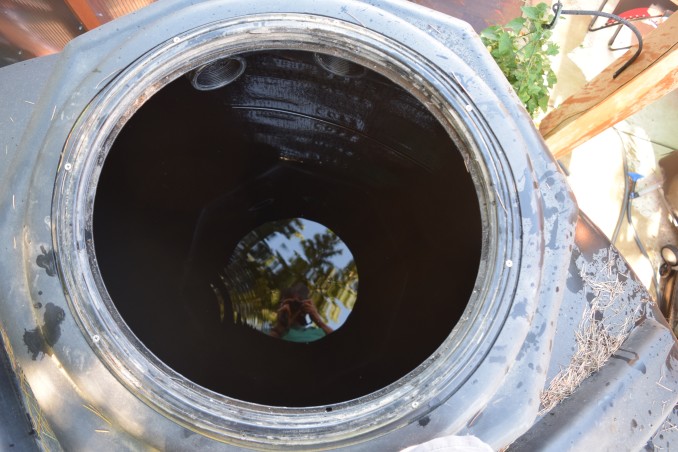
Thank you so much, Michael Martins (owner with t-shirt) and Oregon Rain Harvesting dudes!
You can read the next installment in my series on our rainwater catchment system, which focuses on our min-wetland, here.

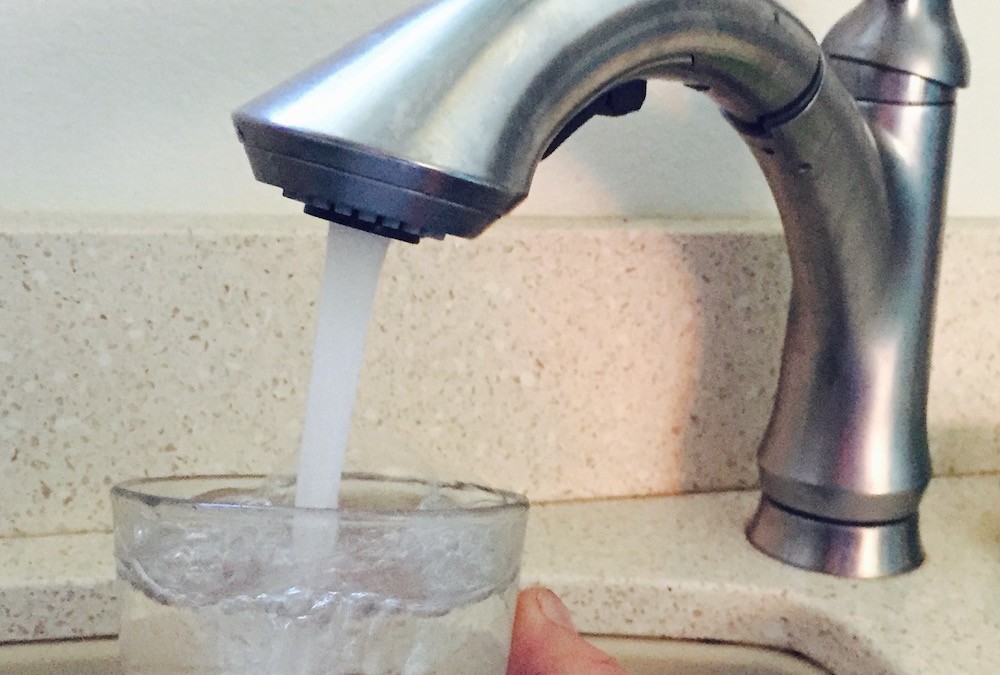

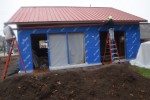

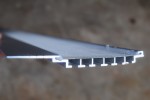








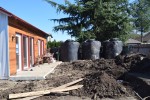
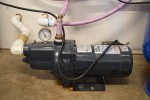

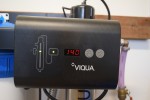
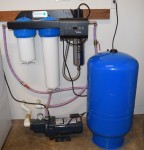






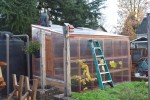
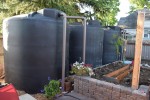


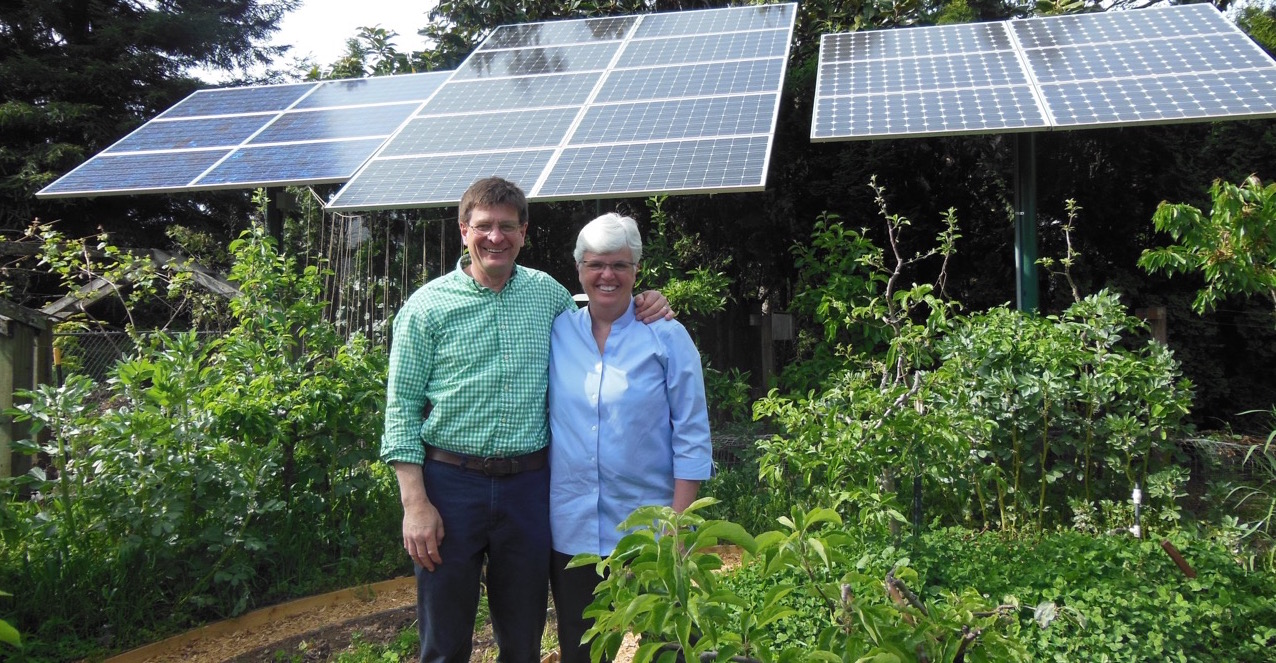


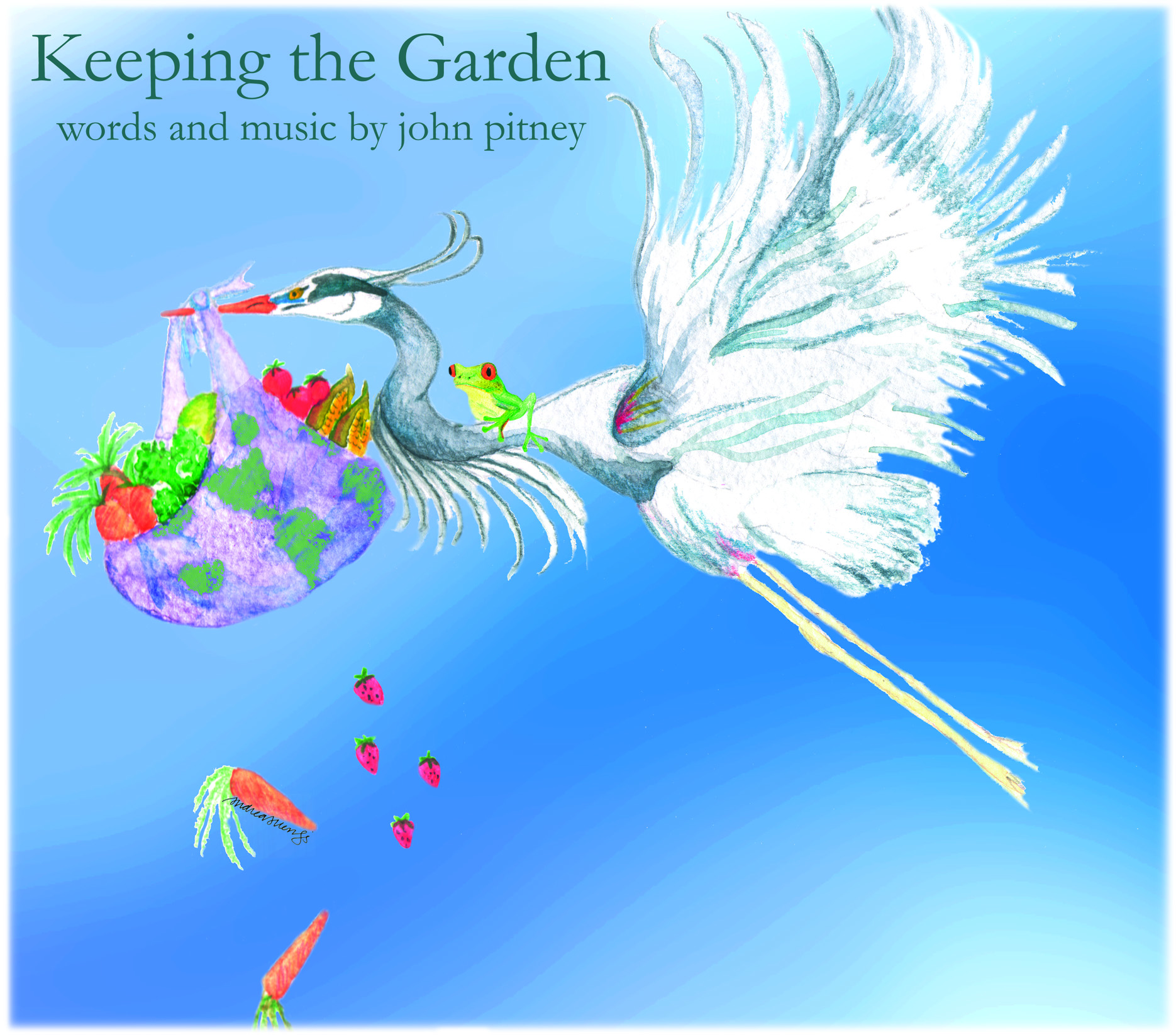



Recent Comments